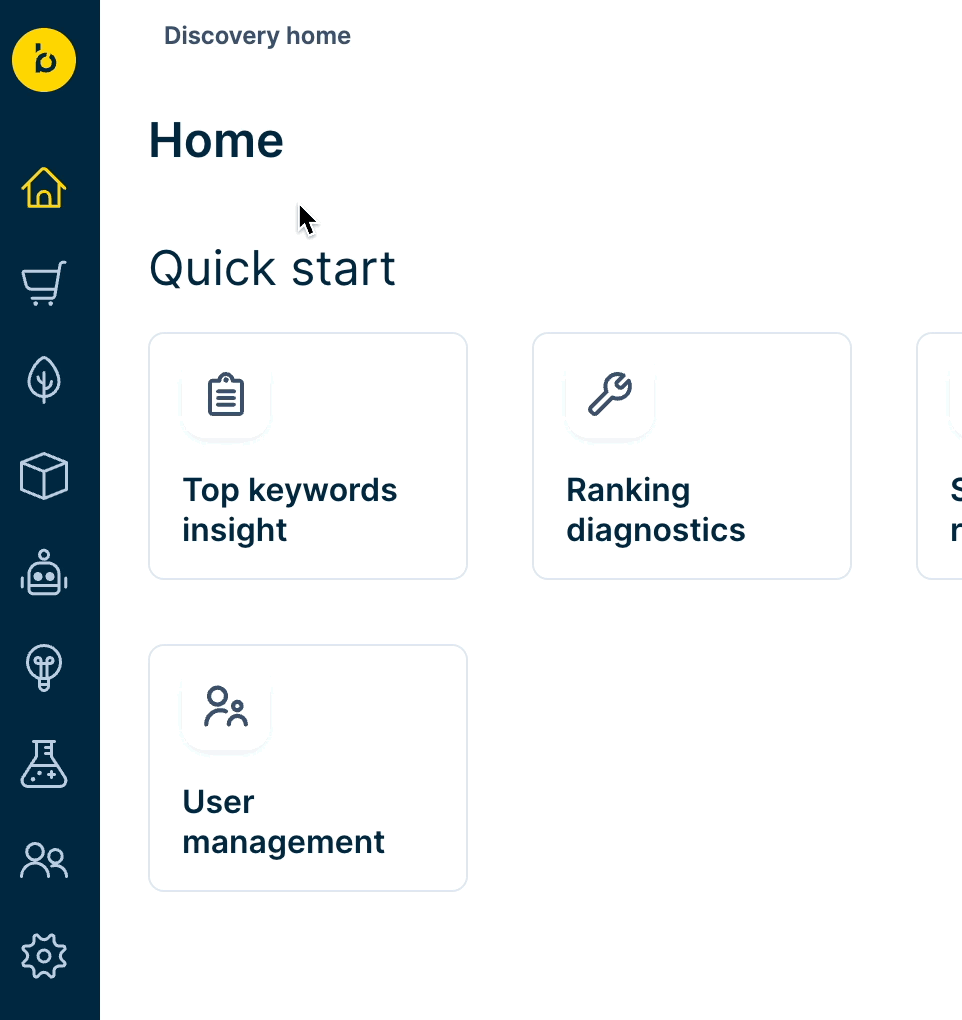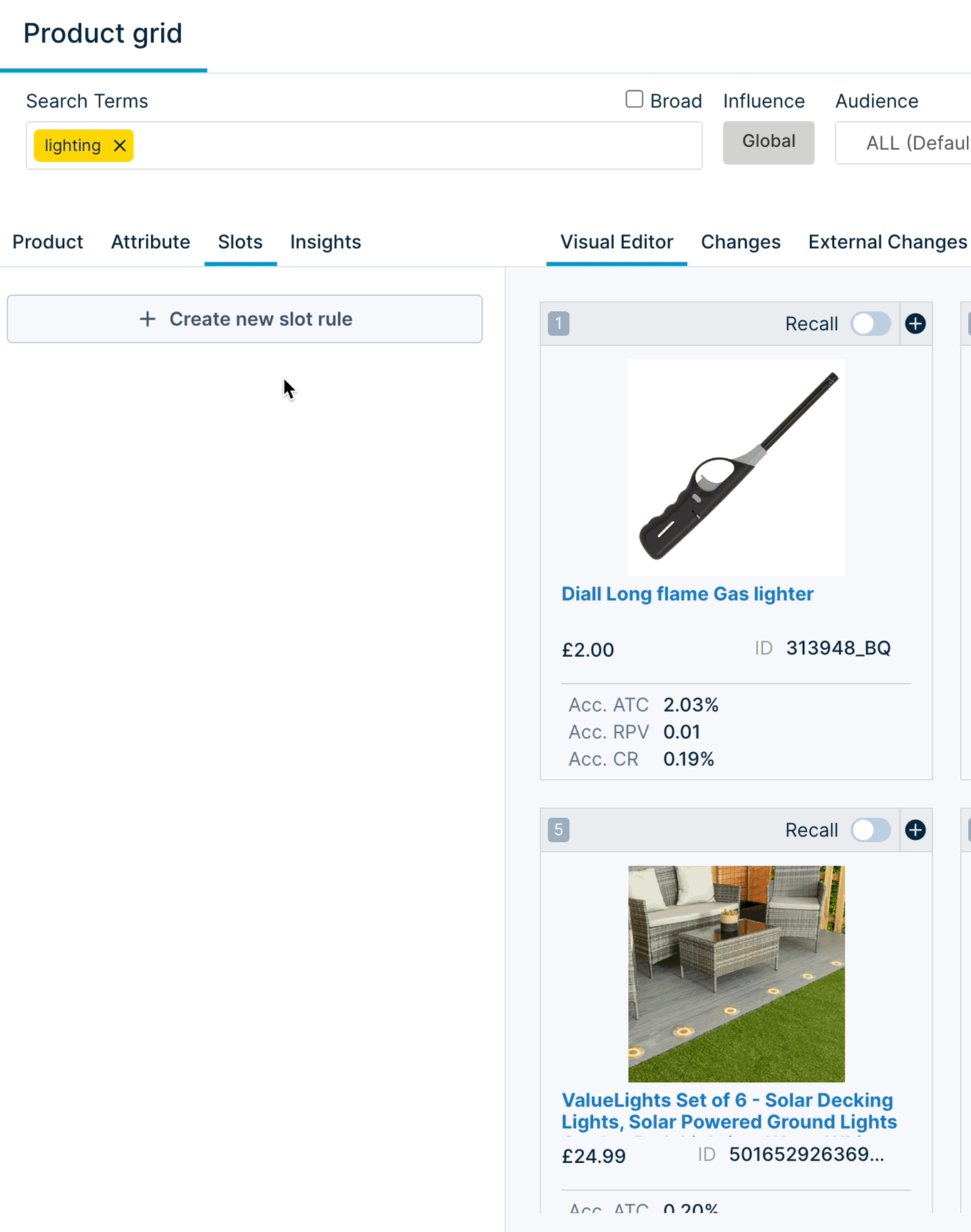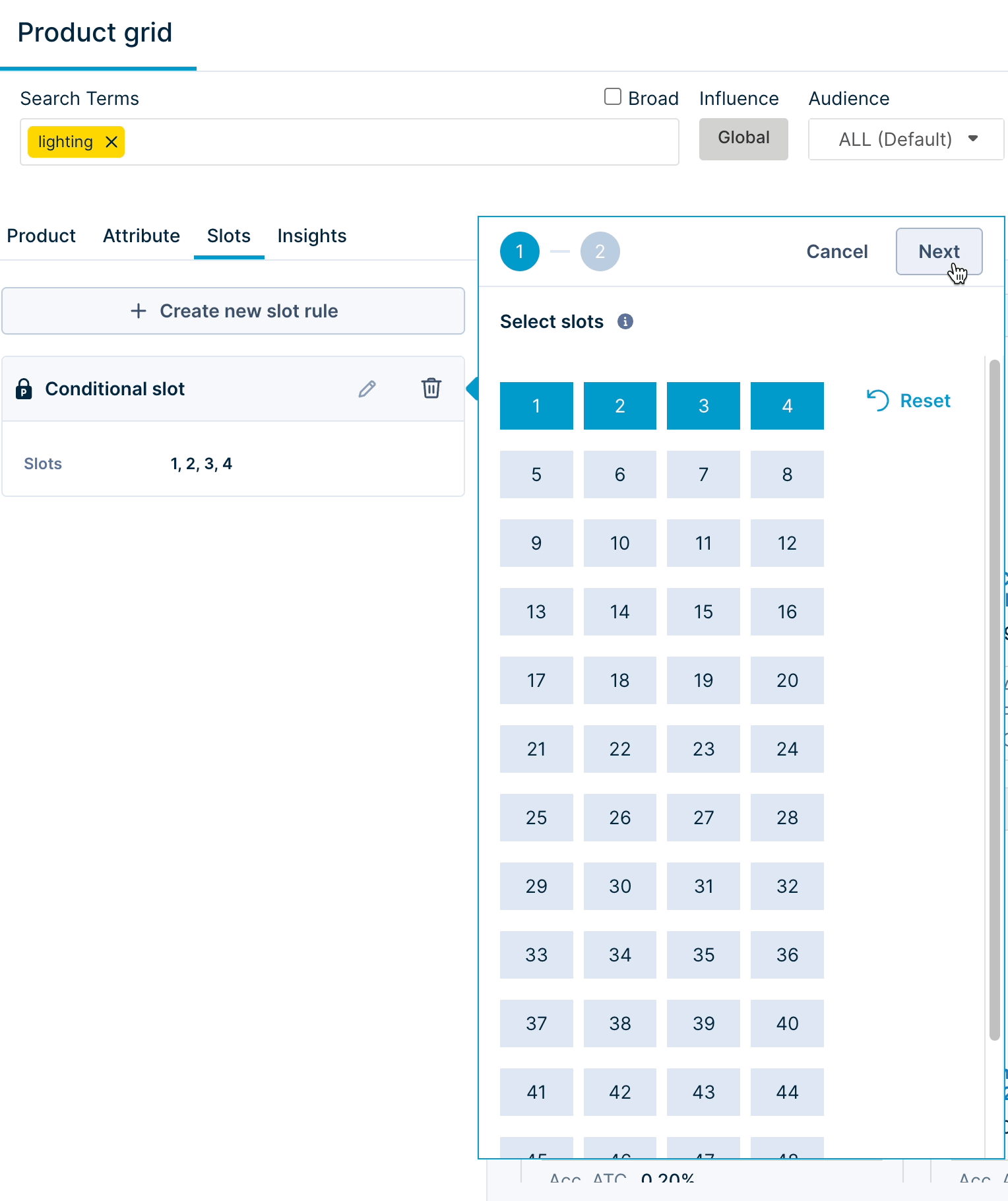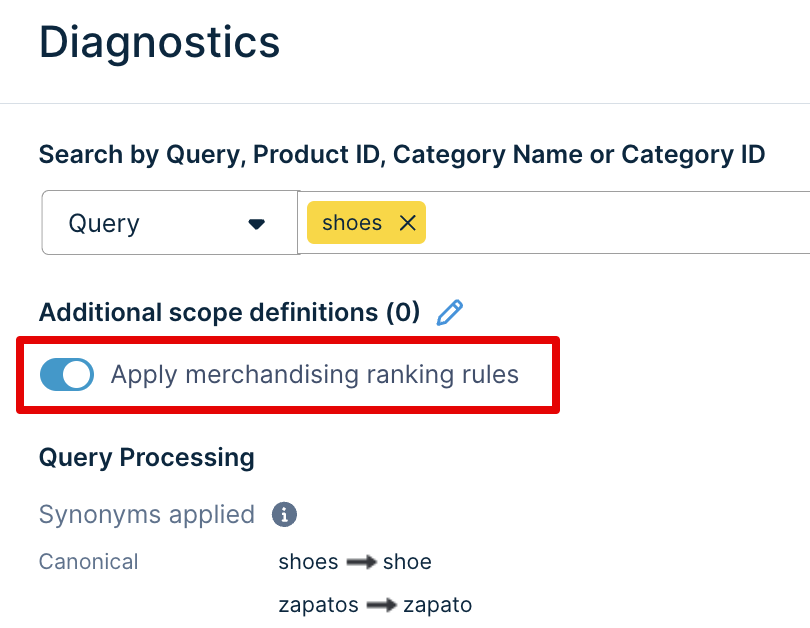🚀 Release 2024-72
Release date: October 24, 2024
TL;DR : Launch of new Personalization studio and Conditional slot merchandising. Multi-language semantic search now supports more languages. Fixed bugs to enhance performance.

🎉 Feature updates
1. Personalize product ranking with the new Personalization studio (BETA)
We are thrilled to announce the launch of Personalization studio which lets you enable and control 1:1 personalized ranking on your site. This delivers differently ranked products to each shopper, in an order that is most relevant to their preferences.
What’s new?
-
New Personalization studio tab in the dashboard to control personalization rules.

-
Enable Personalization globally or for specific search queries or categories.
-
Preview the impact and changes of your rules before applying them.
Key benefits
- Our new personalization algorithm builds and learns from the user affinities of each site visitor for multiple product attributes.
- Personalization works over multiple user sessions and delivers relevant results.
Feature availability
Personalization studio is in BETA. To access this feature, please contact your Bloomreach representative.
Excited to learn more!
Check out the Personalization studio documentation guide.
2. Curate custom product layouts with Conditional slot merchandising (BETA)
We're excited to announce the BETA launch of our latest merchandising feature: Conditional slot merchandising! This feature lets you control which products appear in select slots based on your chosen attribute conditions.
What’s new?
Conditional slot merchandising lets you tailor the product layout in 2 simple steps:
-
Handpick one or more slots from the product grid.

-
Choose and apply attribute conditions to match and display product types in slots.

And voila! The Bloomreach algorithm populates the slots with the top-ranking products according to your merchandising use case.

Business use cases
Following are some of the many business use cases of Conditional slot merchandising:
- Monetise and sell prime slots in the product grid.
- Showcase certain brands next to each other.
- Honor brand agreements for particular slots and ensure that competing products don’t appear together.
- Curate the shopper’s browsing experience with custom visual layouts.
- Showcase complementary products. For instance, always show premium brands next to the in-house ones, or always show t-shirts next to shorts.
Key benefits
Drive Business KPIs: Conditional slot merchandising allows precise control to build custom product layouts with ease. This empowers your merchandising teams to implement their strategy at scale and drive metrics like average order value (AOV), conversion rates, revenue per visitor (RPV), and margin.
Feature availability
Conditional slot merchandising is in BETA. To access this feature, please contact your Bloomreach representative.
How to access the feature on dashboard?
Conditional slot merchandising is available on the following merchandising pages:
- Search term ranking rules
- Category ranking rules (including Dynamic categories)
You can define conditional rules at the site, site group, and account levels.
What’s coming next?
The upcoming feature iterations will add support for Global ranking rules.
Excited to learn more!
Check the feature explanation article.
3. Multi-language Semantic Search support
Following up on our last multi-language Semantic Search release, we are excited to extend Semantic Search capabilities (product type tagging) to catalogs in Chinese, Japanese, Korean, and Finnish. We also support query relaxation for these languages now. This wraps up the Semantic Search rollout for all non-English languages.
We have also added support for Category Keyword Precision for all non-English languages.
What’s new?
- Optimized ranking: Semantic Search identifies the product types from user queries and product data for the above-mentioned non-English languages. This product type information is then used to optimize ranking, especially for torso/tail query ranking, and provides more accurate results.
- Improved recall: Semantic Search leverages smart query relaxation to show similar products when we can’t find exact matches. For example, in Korean, if the user searches for “사무실 테이블” (office table) but the site does not have any products, the query will be relaxed to “테이블”(table). This reduces null results and improves the shopper experience.
- More precise recall: Semantic Search now supports Category Keyword Precision, which helps improve keyword recall precision by matching products using the product type and the dominant categories.
What is coming next?
We plan to support the following semantic features:
- Product type Keyword Precision: Coming soon in November 2024.
- Query relaxation to brand: Coming soon.
How is this useful?
The abovementioned language catalogs can now leverage semantic understanding to optimize search ranking and recall, enhancing the overall product discovery experience.
Feature access
By default, all new and existing customers with the abovementioned language catalogs will have access. Visit the documentation article to learn more. If you wish to enable query relaxation to product type:
- Live customers can enable query relaxation on the dashboard.
- Integrating customers will have access to query relaxation by default.
The above applies to all non-English languages.
⚡Improvements
1. Gain precise control over ranking rules with improved user roles
We have improved the Site Search and Category roles and introduced a new role to better manage access to local and global ranking rules.
What improved?
| Role | Change | Details |
|---|---|---|
| Search Global Ranking Rules Editor | New role | This new role provides read-write access to global and local Site search and Category rules. Only authorized team members can modify and apply crucial global rules. |
| Site Search User | Restricted the scope of permissions | This role now provides read-write access to local Site search rules and read-only access to global rules. |
| Site Search Read Only | Restricted the scope of permissions | This role provides read-only access to local and global Site search rules. |
| Category Ranking Rules Editor | Renamed an existing role | Category User role has been renamed to Category Ranking Rules Editor. This role provides: 1. Read-write access to local Category rules. 2. Read-only access to global rules. |
| Category Ranking Rules Viewer | Renamed an existing role | Category User Read Only has been renamed to Category Ranking Rules Viewer. This role provides read-only access to local Category rules and global rules. |
To learn about the detailed permissions for each role, read the documentation article.
What happens to existing Search and Category role assignments?
We will assign/map the following equivalent roles to the existing role assignments to ensure there’s no interruption in your team’s workflow.
| Existing role | New assigned roles |
|---|---|
| Site Search User | Site Search User and Search Global Ranking Rules Editor |
| Category User | Category Ranking Rules Editor |
| Category User Read Only | Category Ranking Rules Viewer |
Your IAM admin can decide to modify these permissions as needed.
2. New toggle feature to preview ranking rules’ impact in Ranking Diagnostics
What improved?
Ranking Diagnostics now has a new toggle button that lets you easily switch between viewing query results with and without the applied ranking rules. Note that the toggle button does not change the actual status of the ranking rules.

How is this useful?
This enhancement helps you better understand how ranking rules impact query results. By comparing results with and without the applied rules, you can make more informed decisions and adjustments to optimize your search ranking.
3. All Analytics reports are multi-site context aware
What improved?
All the site Analytics reports available are now accessible for different site levels. These reports are available for both Search and Categories and can be found in the dashboard at:
- Insights > Site search analytics > [Reports]
- Insights > Category analytics > [Reports]
How is this useful?
- All site Analytics reports are calculated and displayed separately for all applicable site levels in your organization.
- A Context label under the report title shows which site/account/site group the report is calculated for.
For more information on Analytics reports, refer to the Analytics essentials guide.
🐛Bug fixes
- Cloning configurations: Cloning synonyms from the production site to the staging site would fail after reaching 60% completion. We have resolved this issue.
- Filtering on API: The
efqAPI parameter could not identify filter names with “&”. Support for special characters has been added to theefqparameter. - Missing facet ranges: In the
facet_rangessection of the Search API response, if the product count for a facet range was 0, that range was not returned. Now the API response will contain ranges even with a count 0. - Catalog management: The list of catalogs in the UI showed catalogs that do not exist. This issue has been fixed to stop showing non-existent catalogs.
- Catalog settings: In the Autosuggest settings, while selecting attributes, the list also contained reserved attributes. They will be replaced by “attribute candidates” now.
- In the catalog menu, the functionality to enable/disable the “promote to production” option for a catalog was not working correctly. This issue has been resolved.
Subscribe to Discovery Release Email Notifications
Subscribe to Bloomreach Discovery Release email notifications by filling out this form.
